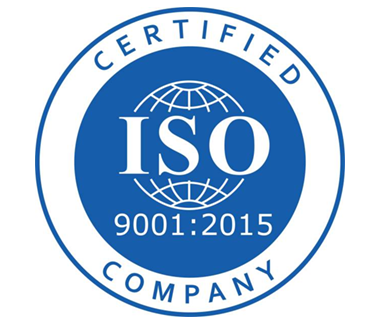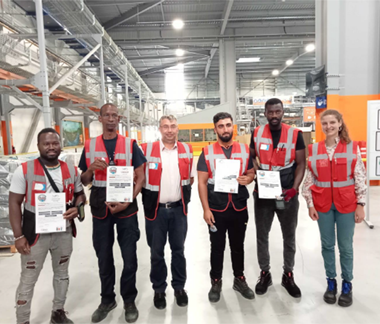Freight transport, definitions and roles
What is freight transport ?
The transport of goods is an activity at the origin of trade, which consists in routing flows from a point A to a point B, anywhere in the world and according to deadlines. This is made possible by several modes of transport : road, rail, sea, river and air.
What are the different modes of transport available ?
They are chosen according to the type of goods to be transported and the destination :
> Road transport :
Trucks are widely used for their flexibility and can be preferred for distances of up to 2,000 km. Controversial for its polluting effects, the trend is to develop trucks running on CNG*. It also represents a significant cost in tonne-kilometres**. There are several types of offers, notably: freighting, full and part loads and palletised courier.
> Maritime transport :
The ship has the largest tonne-kilometre capacity in the world. Ships can transport very heavy and bulky goods over very long distances at a very low price. However, the duration of the transport is generally longer and involves the immobilisation of the goods for several days. It is often described as inflexible because it is difficult to change at the last moment.
> River transport :
This refers to transport via navigable waterways. Inexpensive, it consumes less energy than a train or a truck. It is also a low-noise and low-pollution mode of transport, allowing large quantities of goods to be carried. On the other hand, depending on weather conditions, it may not be useable in case of flooding and takes much longer than road or air transport.
> Railway transport :
The train is used for land transport over 1000 km. Inexpensive, it offers the best value for money. It is also more flexible, as the goods can be spread over several wagons of several trains. However, this means that the journey must be made to destinations close to stations or an additional journey by truck must be planned.
> Air transport :
Air is a type of transport that meets the need for long distance and short lead times. The costs per tonne-kilometre are high and so are the CO2 emissions. Nevertheless, it is generally preferred for goods that cannot be immobilised for too long.
* Natural gas for vehicles
** Quantity of transport calculated by multiplying the mass transported in tonnes (t) by the distance travelled in kilometres (km).
The different road transport offers
The transporters or freight forwarding agents offer different transport services for all needs: transport for small and large quantities of goods, for regular and exceptional needs.
> Freighting :
This is the rental of a trailer dedicated to the customer, to meet urgent, unforeseen or specific needs.
The service is generally provided by a freight forwarder who has charterers in permanent contact with the carriers on the market. He negotiates the price of the service and makes sure that the shipment arrives safely at its destination.
> Batch and full load transport :
This is the full or partial loading of a trailer to meet regular requirements on existing regular routes.
> Palletised courier service :
This is the solution for transporting small quantities of goods. The vehicle's route is optimised by the carrier, by pooling the goods of its customers in order to use its maximum loading capacity.
The road transport sector was driven by an increase in national transport in 2019, the year 2020 has strongly slowed this increase due to the health context.
Overall, the road transport market is expected to grow by about 8% by 2030.
The role of the freight forwarders VS that of the transporters
There are two main statuses among transport actors :
> Transporters :
There are many transporters on the market who ensure the transport of goods from one point to another. As a highly regulated profession with laws that vary from country to country, the carrier must manage his fleet of vehicles and his employees, while managing customer relations and planning pick-ups and deliveries. The transporter's job requires versatility as well as a perfect command of the market. The arrival of freight forwarders has made it possible to relieve them of the relational and administrative aspects of transport.
> Freight forwarders :
They are now one of the key players in the road transport sector.
The freight forwarder does not own a fleet of vehicles but creates partnerships with networks of transporters. This allows him to organize links throughout his perimeter by having a more diversified offer to propose to his customers. Working with a TMS (Transport Management System) which allows him to follow the goods in real time and to manage the documents linked to the transport, the freight forwarder is in charge of organising the whole operation: finding the connection, managing the contract, sending the shipping order, etc.
What does the future hold for road transport in France ?
Global warming is a major ecological issue, and the initiatives of supply chain players are multiplying.
The use of gas-powered vehicles (CNG) is growing. They reduce greenhouse gas emissions by 20% and help improve air quality. Other experiments are being set up to limit impacts :
> Platooning :
This creates a system of heavy truck traffic, with the lead vehicle relaying all information to the vehicles behind it. If the first truck encounters an obstacle that forces it to brake, the vehicles in the platoon are immediately warned, allowing them to brake at the same time without danger. This system requires a special technology that represents a cost for the transporter when purchasing its vehicles.
> Eco-driving :
This is a driving behaviour that allows to reduce fuel consumption and thus, to reduce greenhouse gas emissions.
> Crit'air :
These are stickers that allow a vehicle to be qualified according to its level of polluting emissions. On pollution peak days, the government only allows vehicles with a certain Crit'air to circulate.
> Hydrogen vehicles :
Hydrogen trucks operate with the help of fuel cells and tanks designed to store this energy. The operation of hydrogen is quite similar to that of conventional engines, simply, the energy is generated by the contact between the hydrogen and the fuel cells.
Highly valued at present, hydrogen trucks have zero emissions and fully comply with current environmental standards.







